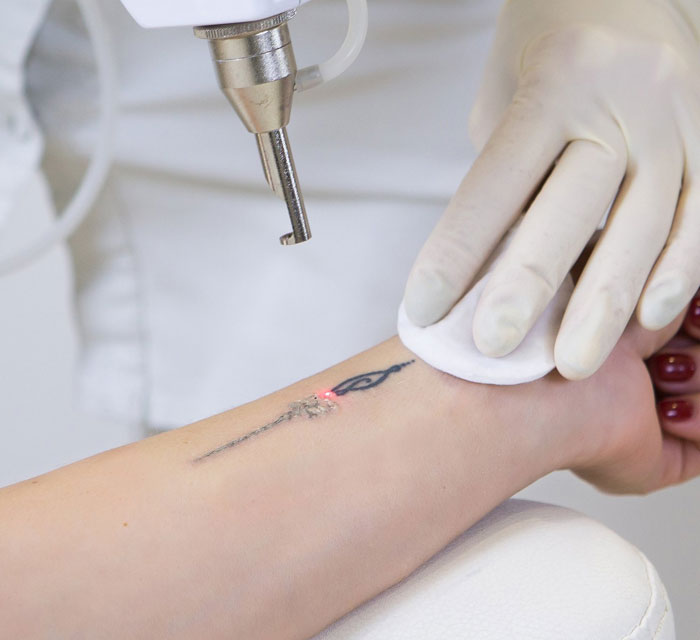Tattoo Removal
Laser Tattoo Removal is the only clinically-proven method of removing a tattoo without causing scarring. During a tattoo removal procedure, laser light is applied to the tattooed area of the skin. The light is selectively absorbed by the tattoo ink particles, leaving the surrounding skin tissue and chromophores unharmed. The tattoo ink particles absorb the laser energy, heat up, and shatter into smaller ink particles.
In the days and weeks following a laser treatment, the body’s immune system flushes away the shattered ink particles, causing the tattoo to fade. Over a series of treatments, more and more of the ink shatters, leaving the skin free of ink.
Wavelengths for Tattoo Removal
Tattoo removal lasers produce specific wavelengths of light that have been proven to be absorbed by certain colors of tattoo ink while avoiding damage to surrounding skin tissue and chromophores (such as melanin and hemoglobin). When the laser energy is applied for the right length of time, at the right level of energy, and in the proper wavelength, the tattoo ink is selectively targeted.
Each wavelength effects how tattoo removal works and corresponds to a certain range of tattoo ink colors, which why different types of tattoo removal lasers are available. The most popular wavelengths used for tattoo removal are 1064nm and 532nm, which can both be achieved with a Q-switched Nd:YAG laser.
